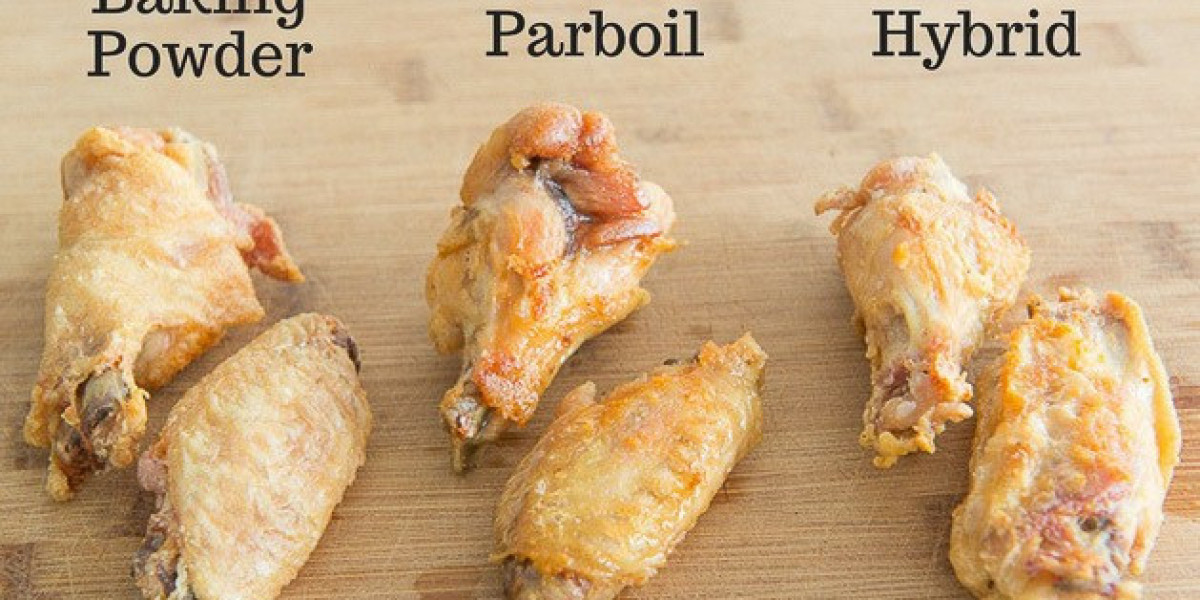Chicken wings are a popular dish around the world, especially as a staple in casual dining and social gatherings. While they are undeniably delicious, many people wonder whether chicken wings can be part of a healthy, balanced diet. The answer depends largely on factors such as preparation method, portion size, and the nutritional composition of the wings themselves. This article explores the nutritional content of chicken wings, potential health benefits, drawbacks, and tips for making them a healthier option.
Nutritional Content of Chicken Wings
Chicken wings, like other parts of chicken, are a good source of protein. However, they also contain varying levels of fat, depending on how they are prepared and whether the skin is consumed.
1. Protein Content
Chicken wings provide a solid amount of high-quality protein, which is essential for muscle repair, immune function, and overall health. A typical serving of chicken wings (about 3.5 ounces or 100 grams) contains approximately 20-25 grams of protein. Protein is also important for maintaining lean muscle mass and promoting satiety, which can be helpful in managing weight.
2. Fat Content
The fat content in chicken wings is higher than in other parts of the chicken, such as the breast. Most of the fat comes from the skin, which is often left on during preparation. A serving of chicken wings can contain between 10-15 grams of fat, depending on how they are cooked. Some of this fat is saturated, which, when consumed in excess, can contribute to heart disease and other health issues.
3. Caloric Content
A single fried chicken wing (with skin) typically contains around 100-120 calories, though this can increase significantly if the wings are prepared with added sauces or breading. Baked or grilled wings have fewer calories and less fat compared to fried versions. For example, a baked chicken wing without sauce may contain only about 40-60 calories.
4. Micronutrients
Chicken wings also provide various essential vitamins and minerals, including:
Iron: Important for transporting oxygen in the blood.
Zinc: Supports immune function and wound healing.
B Vitamins: Particularly niacin (B3) and pyridoxine (B6), which help with energy metabolism and maintaining a healthy nervous system.
Health Benefits of Chicken Wings
Despite their reputation as a high-fat food, chicken wings can offer several health benefits when consumed in moderation.
1. Rich Source of Protein
As mentioned, chicken wings provide a good amount of high-quality protein, which is vital for various bodily functions. Protein helps build and repair tissues, supports muscle health, and contributes to satiety, which can prevent overeating.
2. Nutrient Density
Chicken wings provide essential vitamins and minerals, such as zinc, iron, and B vitamins, all of which play important roles in maintaining optimal health. These nutrients are particularly important for supporting the immune system, improving energy levels, and promoting proper cellular function.
3. Versatile and Customizable
Chicken wings can be prepared in various ways to suit different dietary needs. Grilling or baking them instead of frying can significantly reduce the fat and calorie content, making them a healthier option. Additionally, using healthier marinades or sauces—such as those based on olive oil, lemon, or herbs can enhance flavor without adding excessive sugar or fat.
Drawbacks of Chicken Wings
While chicken wings can be a nutritious option , there are some drawbacks to consider, particularly when they are prepared in less healthy ways.
1. High in Fat and Calories
Fried chicken wings, especially when served with rich sauces like buffalo, BBQ, or ranch dressing, can be high in both fat and calories. Regular consumption of large portions of fried wings can contribute to weight gain and increase the risk of heart disease due to the high saturated fat content.
2. Sodium Content
Many chicken wings, especially those served in restaurants or packaged with sauces, are high in sodium. Excessive sodium intake is associated with high blood pressure, which can lead to cardiovascular problems. To reduce sodium intake, opt for homemade versions where you can control the amount of salt and choose low-sodium sauces.
3. Portion Control Challenges
It's easy to overeat chicken wings, especially in social settings or when they are served with high-calorie sides. Monitoring portion sizes is essential to ensure you're not consuming more calories or fat than intended.
Making Chicken Wings Healthier
To incorporate chicken wings into a balanced diet, consider the following strategies:
1. Choose Healthier Cooking Methods
Instead of frying, try baking, grilling, or air-frying chicken wings. These methods reduce the amount of added fat and calories while still preserving flavor.
2. Remove the Skin
The majority of the fat in chicken wings is found in the skin. Removing the skin before or after cooking can significantly reduce the fat content of your meal without sacrificing much protein.
3. Watch Your Portions
Stick to reasonable portion sizes. A serving of 3-4 wings can provide ample protein without going overboard on calories and fat. Pair your wings with healthier side dishes, such as a salad or steamed vegetables, to create a balanced meal.
4. Use Healthy Sauces
Avoid sugary or creamy sauces, which can add unnecessary calories and fat. Instead, use marinades made from herbs, spices, vinegar, or olive oil to enhance the flavor without compromising health.
Conclusion
Chicken wings can be part of a healthy, balanced diet if prepared and consumed thoughtfully. While they are higher in fat and calories than other cuts of chicken, they also provide valuable protein and nutrients. By opting for healthier cooking methods, controlling portion sizes, and choosing nutritious sides and sauces, you can enjoy chicken wings while maintaining a balanced diet.
